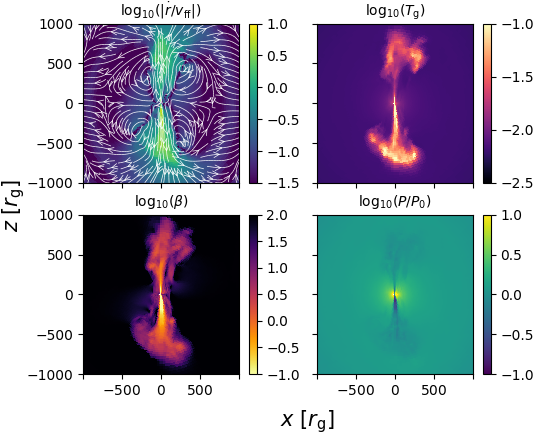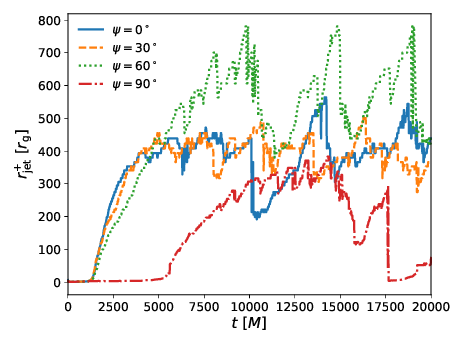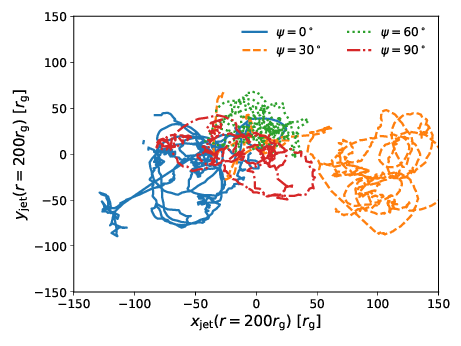While many AGN display powerful jets likely caused by the rotation of the central black hole, others, like Sagittarius A*, do not have any obvious signature of a jet. Determining whether this is a propagation effect or an intrinsic property of the near-horizon flow is impossible with standard GRMHD simulations that start with gas contained in a torus. Because of the already evacuated polar regions, every simulation with nonzero spin shows a clear and obvious jet that essentially propagates to infinity. As an alternative, we studied the accretion of zero angular momentum gas distributed at all angles onto a rapidly rotating black hole. We found that, while strong jets form near the horizon, they cannot propagate to large radii because they are kink unstable. This instability is caused by the helical magnetic field in the jet running into dense material, leading to erratic wobbling and strong dissipation. Interestingly, the horizon-scale emission properties were essentially unchanged from similar torus models which had strong jets out to large distances. This could be a promising explanation for the lack of an observed jet in Sagittarius A*.


